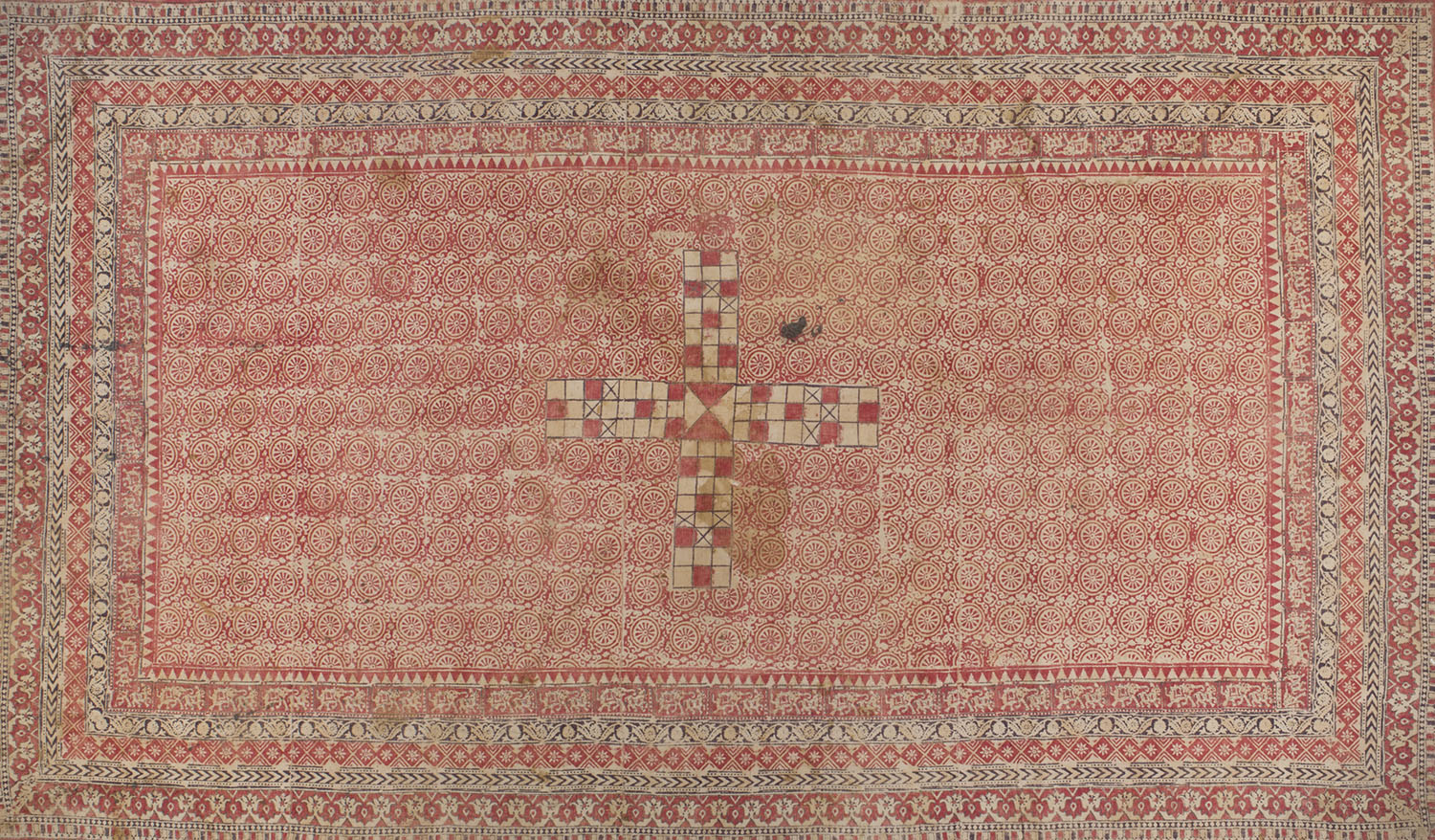ARTICLE
Jajam
A large patterned floor spread, jajam is made communally in rural households across Rajasthan and is considered a people’s textile.
Printed on thick, handwoven cotton fabric, jajam’s production engages a community of artisans, including chhipas (printers), rangrezs (dyers), dhobis (washers) and kharadi (woodcarvers). The visual composition of jajams bears multiple, thick borders, along with a complex centrally-placed design. The designs that were printed on the fabric borrowed from local architectural motifs and the flora and fauna of the region – tigers, elephants, warriors surrounded by geometrical formations. Red and black were primarily used and their dyes were procured naturally.
Jajam, unlike many textile traditions, has neither been patronised by royalty nor has it enjoyed a commercial interest. It is meticulously crafted by members of a community and used during ceremonial or public occasions such as council meetings and festivals, as an item of exchange during marriages and as temple offerings. The chaupar motif figures largely in jajams. Block printed at the centre of the textile, it enabled two to four players to play a game of dice and race their pawns along its four-armed path. Thus crucial in entertainment and celebration, the normative size of a jajam was large enough to accommodate people.
With progressive urbanisation, however, the craft dwindled away and only a few printers continued to practice and pass on the skills. Natural ingredients have given way to synthetic fabrics and chemical dyes. Since 2016, there has been a concerted effort by the Wabisabi Project along with Anokhi Museum of Hand Printing to document the craft and culture of jajam. Additionally, it has been a subject of a documentary, Rediscovering Jajam.
Bibliography
Our website is currently undergoing maintenance and re-design, due to which we have had to take down some of our bibliographies. While these will be re-published shortly, you can request references for specific articles by writing to hellomapacademy@map-india.org.







